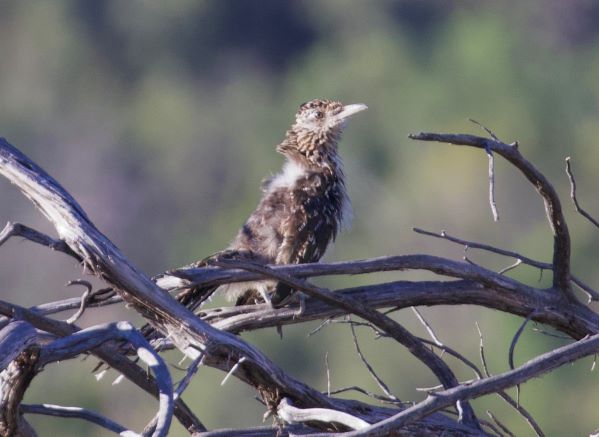Jake Mohlmann has just completed our always-popular Arizona & Utah tour and reports:
We just finished up our WINGS tour through northern Arizona and southern Utah, traveling just over 2,000 miles of paved and dusty roads, and coming across 205 species of birds while doing it. The scenery was simply stunning, and the wildflower show was spectacular throughout our entire journey proving the parched landscape received some good rains this year.

Our group enjoying Bryce Canyon’s famous amphitheater.

Rains brought a rainbow over Canyon de Chelly’s Spider Rock.
A complete surprise occurred when the group found not one, but two different White-winged Crossbills high up on the North Rim of the Grand Canyon. If accepted, this would constitute the third (and fourth) record for this species on Arizona’s state list. Not an easy task considering how many birders cover this popular birding state every year.

This male White-winged Crossbill will likely be Arizona’s fourth record.
There were many migrant birds we crossed paths with during our adventure. The southwestern Willow Flycatcher was seen multiple days, as well as other empidonax species like Dusky and Hammond’s. Even Say’s and Black Phoebes were seen multiple days rounding out our large flycatcher list for the tour.

Hammond’s Flycatcher strikes a beautiful pose.

A Black Phoebe reduces the fly population by one.
Some days birds filled the skies. Whether it was flocks of American Robins plucking ripe juniper berries, or troops of Pinyon Jays flying over in formation, or even multiple sallying Townsend’s Solitaires all utilizing the same perch.

This Townsend’s Solitaire at Wenima was ‘whisper singing’.

Crissal Thrasher was seen well. A statement not said often! A major highlight was getting amazing looks at a Crissal Thrasher along the Arizona Strip. This species can be extremely difficult to get a look at, and seems to taunt birders as it calls incessantly only to remain concealed in frustration.
Mammals tend to also be a highlight on this tour as it traverses latitudes from 1,100 feet in the Sonoran Desert all the way up to over 10,000 feet amongst alpine meadows and spreading coniferous forest. Although there’s a chance to see two subspecies of Bighorn Sheep on this tour, we were elated to see one. A pair of rams were roadside first thing in the morning and didn’t seem bothered with our presence.

A roadside ram Rocky Mountain Bighorn Sheep.
A lot of the small mammals are nocturnal, but the ones we normally get to see on this tour often include the small Utah Prairie Dog, ubiquitous Rock Squirrel and Gray-collared Chipmunk. This chipmunk is endemic to east-central Arizona and southwest New Mexico, and awfully cute.

Gray-collared Chimpmunk in the White Mountains.
Cold-blooded creatures are few and far between once one leaves the desert, but we were lucky enough to add Plains Spadefoot Toad to the list at an ephemeral pond north of Flagstaff, as well as a Wandering Garter Snake at Sipe Wildlife Management Area.

Wandering Gartersnake sunning on a log.
A highlight in the odonatan department was a huge Common Green Darner whose wings seemed to glitter metallically as it winged along Luna Lake’s shore oblivious to the human onlookers wrought with admiration.

Common Green Darner seeking refuge amongst grass.

This Greater Roadrunner was a hit -- found while sunning in the early morning light.
A major highlight was getting amazing looks at a Crissal Thrasher along the Arizona Strip. This species can be extremely difficult to get a look at, and seems to taunt birders as it calls incessantly only to remain concealed in frustration.
